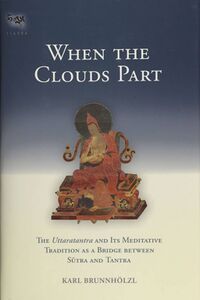Explore: Difference between revisions
((by SublimeText.Mediawiker)) |
((by SublimeText.Mediawiker)) |
||
| Line 524: | Line 524: | ||
{{FeaturedItem | {{FeaturedItem | ||
|page=Primary_Sources | |page=Primary_Sources | ||
|description=<div class="section-header mt-2 mb-4 border-bottom-rightfade">Study the sources</div> The seeds of buddha-nature teachings are sprinkled throughout the sutras and tantras of the Buddhist canon. A core group of scripture that initially taught buddha-nature known as the tathāgatagarbha sūtras date between the second and fourth centuries. These include the ''Tathāgatagarbhasūtra'', the ''Mahāparinirvāṇasūtra'', the ''Śrīmālādevīsūtra'' and several others. The famous ''Laṅkāvatārasūtra'' was also important for buddha-nature theory. In Tibetan Buddhism the late-Indian treatise ''Ratnagotravibhāga Mahāyānottaratantraśāstra'', or "Gyu Lama" as it is known in the Tibetan, serves as a major source for buddha-nature. In East Asia the ''Awakening of Faith in the Mahāyāna'' (大乗起信論) was the most influential treatise in spreading buddha-nature theory.<p class="featured-link">[[Primary Sources|Read more on the sources for buddha-nature teachings...]]</p> | |description=<div class="section-header mt-2 mb-4 border-bottom-rightfade">Study the sources</div> | ||
<div class="pl-lg-5 pr-lg-4">The seeds of buddha-nature teachings are sprinkled throughout the sutras and tantras of the Buddhist canon. A core group of scripture that initially taught buddha-nature known as the tathāgatagarbha sūtras date between the second and fourth centuries. These include the ''Tathāgatagarbhasūtra'', the ''Mahāparinirvāṇasūtra'', the ''Śrīmālādevīsūtra'' and several others. The famous ''Laṅkāvatārasūtra'' was also important for buddha-nature theory. In Tibetan Buddhism the late-Indian treatise ''Ratnagotravibhāga Mahāyānottaratantraśāstra'', or "Gyu Lama" as it is known in the Tibetan, serves as a major source for buddha-nature. In East Asia the ''Awakening of Faith in the Mahāyāna'' (大乗起信論) was the most influential treatise in spreading buddha-nature theory.<p class="featured-link">[[Primary Sources|Read more on the sources for buddha-nature teachings...]]</p></div> | |||
|image=https://commons.tsadra.org/images-commons/thumb/c/c7/Maitreya_statue.jpg/431px-Maitreya_statue.jpg | |image=https://commons.tsadra.org/images-commons/thumb/c/c7/Maitreya_statue.jpg/431px-Maitreya_statue.jpg | ||
|textclasses=maitreya-gradient pt-2 pb-3 | |textclasses=maitreya-gradient pt-2 pb-3 | ||
Revision as of 16:18, 31 July 2020

See all presentations
Klaus-Dieter Mathes
Ngawang Jorden
Jacqueline Stone
'Gos Lo tsā ba gZhon nu dpal's (1392–1481) extensive commentary on the Ratnagotravibhāga (RGV), the standard Indian treatise on the doctrine of buddha nature, provides a rich source of information about the early transmission of the Tibetan Buddhist canon. In it we find not only a complete 15th-century Tibetan version of the RGV (including Asaṅga's commentary), but also a critical philological review of the earlier Tibetan canonical translation by rNgog Blo ldan shes rab (1059–1109) against the background of the original Sanskrit about which 'Gos Lo tsā ba was exceptionally knowledgeable. 'Gos Lo tsā ba's study, rife with quotations from a great variety of texts from both the bKa' 'gyur and bsTan 'gyur, thus offers representative samples from all strands of Indian Buddhist literature. 'Gos Lo tsā ba's Gyülama commentary is not only the first available commentary belonging to the meditation tradition (Tib. sgom lugs) of the Maitreya works, but also includes a tradition of teaching Mahāmudrā based on the sūtras and the works of Maitreya.
Ringu Tulku
Tokpa Tulku
I.28
རྫོགས་སངས་སྐུ་ནི་འཕྲོ་ཕྱིར་དང་། །
དེ་བཞིན་ཉིད་དབྱེར་མེད་ཕྱིར་དང་། །
རིགས་ཡོད་ཕྱིར་ན་ལུས་ཅན་ཀུན། །
རྟག་ཏུ་སངས་རྒྱས་སྙིང་པོ་ཅན། །
Since suchness is undifferentiable,
And because of the disposition,
All beings always possess the buddha heart.
संबुद्धकायस्फरणात् तथताव्यतिभेदतः
गोत्रतश्च सदा सर्वे बुद्धगर्भाः शरीरिणः
佛法身遍滿 真如無差別
皆實有佛性 是故說常有
Click to view all verses





